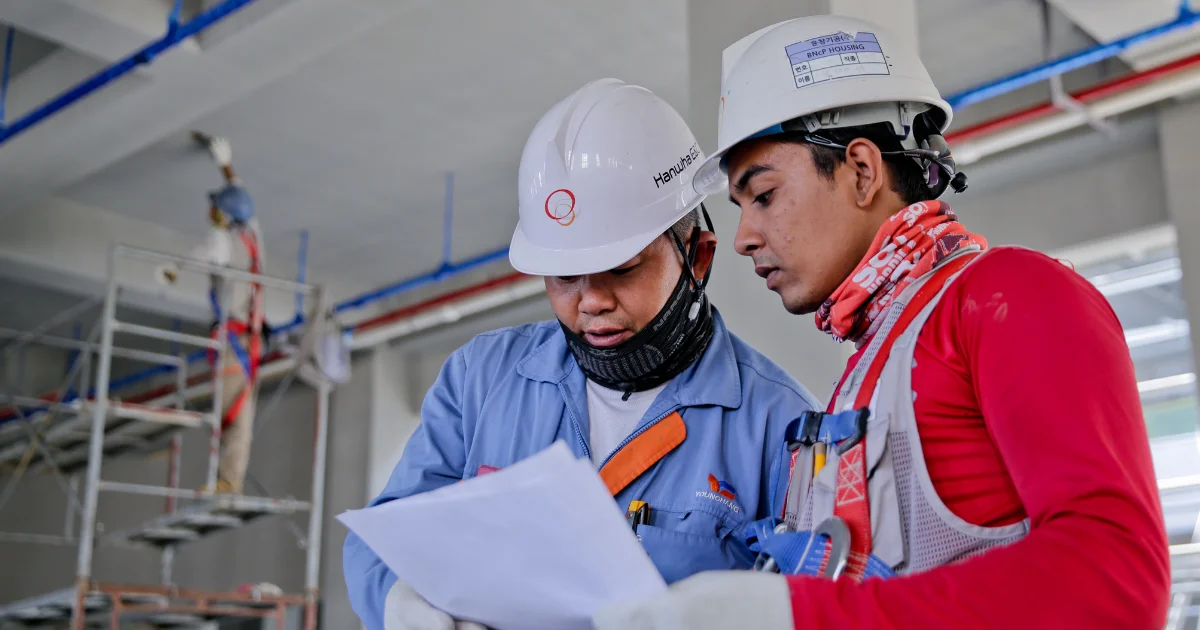In today’s dynamic construction industry, mastering the complexities of surety funds control is essential for project success. Whether you’re a seasoned pro or just starting, understanding the intricacies of managing these funds is crucial for project completion and financial stability.
In this article, we’ll explore the core principles of surety funds control, providing practical insights and actionable strategies for managing funds. Whether your goal is risk mitigation, process optimization, or enhancing project transparency, this article will provide valuable insights to help you succeed.
Understanding Surety Bonds
In the construction industry, surety bonds play a critical role by serving as a form of financial assurance for project owners.
Investopedia defines a surety bond as a three-party agreement. The project owner, referred to as the obligee, is the one hiring the contractor, the principal. The third party is the surety company, acting as the guarantor.
This arrangement aims to ensure that the contractor meets their contractual commitments. This encompasses finishing the project as per the specified requirements and ensuring timely payment to suppliers, subcontractors, and laborers for their services.
Several types of surety bonds are commonly used in construction projects.
- Performance bonds ensure the project’s completion as per the contract terms.
- Payment bonds, on the other hand, guarantee payment to subcontractors, suppliers, and laborers involved in the project.
- Bid bonds provide financial security to project owners by making sure contractors submit serious bids and enter into contracts if awarded the project.
- Maintenance bonds offer coverage for defects in workmanship or materials that may arise after project completion.
For contractors, obtaining surety bonds is often a prerequisite for securing contracts on construction projects. Surety companies assess contractors’ financial stability, track record, and capacity before issuing bonds. This procedure entails assessing elements like creditworthiness, past project performance, and the contractor’s capacity to meet the terms of the contract.
Must Read: Do You Need Radon Testing for New Construction?
Exploring Surety Funds Control
Surety funds control keeps construction projects on track financially. When a surety company issues a bond, they might set up controls on how that money is spent. It helps avoid problems like running out of money before the project is finished, delays due to financial issues, or misuse of funds.
Surety funds control benefits everyone involved in construction:
- Project owners: They can be confident their money is being used wisely, and the project will be completed as planned.
- Contractors: They can access the funds they need to pay bills and keep the project moving.
- Subcontractors and suppliers: They are more likely to get paid on time for their work and materials.
This process involves careful management of the project budget, tracking expenses, and ensuring funds are only used for their intended purpose. It’s like having a system to ensure everyone gets paid what they’re owed and the project stays on budget. It further ensures all parties comply with the agreements and regulations they signed up for.
To explore more, click here for information on surety funds control and how it can benefit your construction project.
Implementing Surety Funds Control
Implementing surety funds control in construction projects is crucial for ensuring financial stability and project success. It involves a systematic approach to managing funds allocated for specific project tasks and expenses. Initiating transparent communication pathways among project participants, encompassing subcontractors, contractors, and surety providers, is paramount from the outset. This fosters transparency and ensures accountability across all stages of the project’s lifespan.
North American Construction Services suggests implementing robust financial tracking systems and reporting mechanisms is also vital. These systems help monitor fund disbursements, expenditures, and project progress accurately. By maintaining detailed records of financial transactions and project expenses, construction teams can identify potential issues early and proactively address them.
Adherence to contractual agreements and regulatory requirements is another critical aspect of implementing surety funds control. Construction projects often involve complex contractual obligations and regulatory compliance standards. Ensuring compliance with these requirements helps mitigate risks and ensures project integrity.
Moreover, regular audits and reviews of financial records and project documentation are necessary to verify the accuracy and integrity of fund management processes. It helps promptly identify discrepancies or irregularities and take corrective actions as needed.
See Also: Challenges in Construction Job Management
Benefits of Surety Funds Control
As per NYC.gov, a surety guarantees that a contract will be fulfilled even if the contractor fails to do so. Contractors get surety bonds from companies, and if there’s a default, the surety firm finds another contractor to finish the project. If this cannot be done, the client is entitled to compensation for any financial losses incurred.
Surety funds control provides a structured framework for managing project funds in construction ventures, ensuring transparency, accountability, and compliance with contractual obligations. One of the primary benefits is enhanced financial transparency, as it offers a clear audit trail of project expenditures, payments, and budget allocations. This transparency fosters trust and confidence among project stakeholders, including owners, contractors, subcontractors, and surety companies.
Surety funds control also facilitates risk mitigation by identifying potential financial risks early in the project lifecycle and implementing measures to address them proactively. Moreover, by streamlining financial processes and documentation, surety funds control enhances project management efficiency, leading to smoother workflows, reduced administrative overhead, and improved decision-making.
Challenges and Considerations
Stakeholders must comprehend and adhere to various legal frameworks spanning federal, state, and contractual obligations. Construction projects are inherently dynamic, featuring evolving scopes, timelines, and budgets. Flexibility and agility are essential for adjusting surety funds control practices to accommodate these fluctuations. Navigating cash flow fluctuations, payment delays, and unforeseen costs can pose substantial hurdles to surety funds control.
Chambers notes that these challenges are closely tied to costs, restrictions, and dependencies. Costs, including premiums and insurer charges, can strain project budgets, impacting financial resources. Additionally, restrictions on credit evaluations may limit accessibility for some entities. The reliance on the insurer’s financial stability emphasizes the need for thorough due diligence when choosing a provider.
Ineffective communication may lead to misunderstandings and delays, hindering the control of surety funds. Stakeholders must invest in resources, training, and infrastructure to effectively utilize technology solutions aligned with project needs and goals.
Best Practices for Surety Funds Control
One key practice is to establish clear communication channels among all stakeholders involved in the project, including contractors, surety companies, and project owners. It ensures transparency and facilitates prompt resolution of any issues that may arise. Also, maintaining accurate and up-to-date financial records is essential for tracking funds and ensuring compliance with contractual obligations.
Another best practice is conducting regular audits and reviews of financial transactions related to the project to promptly identify any discrepancies or irregularities. This proactive approach helps mitigate risks and ensures funds are used appropriately. Moreover, implementing robust internal controls and procedures can help prevent fraud and misuse of funds, safeguarding the interests of all parties involved.
Furthermore, establishing contingency plans and risk management strategies is essential for addressing unforeseen challenges that may impact the project’s financial stability.
Also Read: Different Phases of Construction Project Management
Frequently Asked Questions
How does Surety Funds Control differ from traditional project financing in construction?
Traditional project financing gives the contractor direct control over project funds. Surety funds control, however, acts like a middleman. The surety company monitors how the money is spent, ensuring it aligns with the project budget and contractual agreements. This extra layer of oversight mitigates risks for project owners and helps ensure project completion.
What are the main responsibilities of parties involved in Surety Funds Control?
While the contractor has full control of the money, a surety company oversees spending. They ensure funds are used as planned according to the budget and contracts. The company protects the project owner and fosters responsible spending by the contractor, keeping everyone on the same page.
How does Surety Funds Control mitigate risk and provide financial protection for construction projects?
Surety funds control safeguards construction projects by acting like a financial watchdog. It ensures project funds are used according to the budget and contracts. It protects the owner by preventing misuse of funds and helps the contractor stay on track financially.
In conclusion, mastering surety funds control is pivotal for the success of construction projects. Stakeholders can optimize project outcomes and ensure financial stability by understanding its fundamentals, implementing best practices, and navigating associated challenges.



